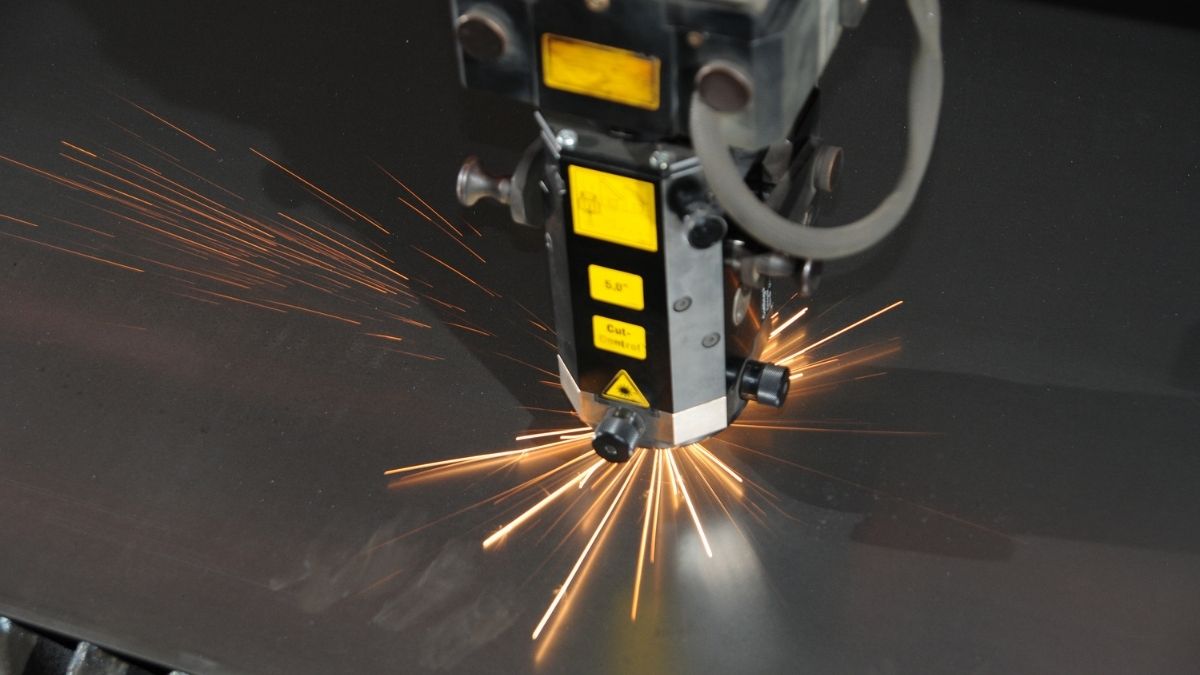Your grandfather’s removal company used a paper diary, a landline phone, and a battered A-Z street atlas. Quotes were calculated on the back of envelopes. Bookings meant writing names in a ledger.
That business model is dying.
Modern removal companies are using technology to operate faster, cheaper, and more reliably than traditional competitors. They’re winning customers, improving margins, and scaling operations in ways that weren’t possible five years ago.
The gap between tech-enabled removal companies and traditional operators grows wider every month. One group is thriving. The other is slowly going extinct.
Here’s exactly how technology is reshaping the removals industry.
Instant Online Quotes: The New Competitive Minimum
How long should it take to get a removal quote?
Traditional companies say 24-48 hours. They need to visit your house, measure rooms, count boxes, calculate hours, then email a quote.
Tech-enabled companies give you a price in 90 seconds.
How instant quoting works:
Customer enters basic details online—property size, number of bedrooms, distance to new location, moving date. Algorithm processes this information against historical data from thousands of previous moves. System generates accurate quote instantly with transparent pricing breakdown.
AnyVan pioneered this model in the UK removals market. Their instant quote system processes property information and provides binding quotes immediately. No waiting. No home visits for standard moves. Customers can book and pay within five minutes of deciding to move.
Traditional removal companies lose 60-70% of quote requests because customers get tired of waiting. They request quotes from three companies. The one that responds first usually wins the job. That’s rarely the company requiring 48-hour turnaround times.
One removal company I spoke with implemented instant online quoting and saw quote-to-booking conversion rates jump from 12% to 34%. Same service. Same prices. Faster response time. Nearly triple the conversion rate.
Route Optimization: Saving Hours Per Day
What if you could reduce driving time by 20% without changing anything else?
Traditional removal companies plan routes based on experience and intuition. “We’ll do the city centre moves in the morning before traffic builds up.” This works until it doesn’t.
Tech-enabled companies use AI-powered route optimization that considers traffic patterns, parking restrictions, congestion zones, and optimal sequencing of multiple jobs.
Real route optimization benefits:
Routific, Circuit, and similar logistics software can handle complex multi-stop routes. A removal company doing three moves in one day gets optimal sequencing that minimizes total driving time and fuel costs.
One London removal company reduced average job time by 45 minutes per move after implementing route optimization. That’s three extra jobs per week with the same team. At £400 average job value, that’s £62,400 additional annual revenue per team.
Traffic prediction algorithms factor in historical data, live traffic, weather conditions, and events. The system knows that moving in Camden on a Sunday is faster than Wednesday. It knows that Chelsea moves take 20% longer due to parking restrictions. This knowledge is built into scheduling.
GPS tracking shows customers exactly where the removal van is in real-time. “Your removal team is 12 minutes away” beats “they’ll be there sometime between 8am and 10am.” Customer anxiety drops significantly with real-time updates.
Digital Inventory Management: Nothing Gets Lost
How do removal companies track 500 boxes across multiple properties?
Traditional method: Write numbers on boxes with marker pen. Hope nothing goes missing. Argue with customers about whether there were 47 or 52 boxes.
Tech solution: Digital inventory apps that photograph, barcode, and track every single item.
How digital inventory systems work:
Removal teams use tablets or smartphones running inventory apps like Sortly or Nest Egg. They photograph each box as it’s loaded. The app generates unique QR codes or barcodes for each item. Scanning tracks items from loading to delivery.
Customers receive real-time inventory updates. They can see exactly what’s been loaded, what’s in transit, and what’s been delivered. No more standing at the new house wondering if that box of kitchen items is coming or was left behind.
Insurance claims become straightforward with photographic evidence. Customer claims a box of china arrived damaged? Photos show the condition when loaded. Either proves the claim is valid or demonstrates the item was already damaged.
One removal company reduced customer disputes by 78% after implementing digital inventory. Most arguments about missing or damaged items come from poor documentation. Photographs eliminate ambiguity.
Dynamic Pricing: Maximizing Revenue and Utilization
Should a Friday move cost the same as a Tuesday move? Should August cost the same as January?
Traditional companies charge the same rate year-round regardless of demand. They’re fully booked in summer, turning away customers. They’re desperate for work in January, offering the same prices as peak season.
Tech-enabled companies use dynamic pricing based on demand, just like airlines and hotels.
Dynamic pricing in practice:
Prices adjust automatically based on available capacity. A Monday move in January when you’ve got empty vans might be £500. That same move on a Saturday in August costs £700. Same work. Different demand.
Customers booking far in advance get better prices. Book your move six weeks ahead? Save 15-20%. Book it next week during peak season? Pay premium prices. This incentivizes early booking and helps companies plan capacity.
Off-peak incentives fill quiet periods. “Move Tuesday-Thursday in February and save 25%” automatically generates bookings during traditionally quiet periods. Better to earn £400 on a quiet Tuesday than £0.
One removal company implemented basic dynamic pricing and increased annual revenue by 18% without adding staff or vans. They were simply charging market-rate prices during peak demand instead of leaving money on the table.
Automated Scheduling and Resource Management
How many vans and teams do you need on Saturday 15th July?
Traditional companies guess based on experience. They overstaff (wasting money) or understaff (turning away jobs).
Tech systems predict demand accurately and optimize resource allocation.
Scheduling software capabilities:
Systems like Jobber or Housecall Pro manage the entire scheduling process. They know each team’s capacity, skills, and location. They allocate jobs optimally based on proximity, complexity, and team capability.
Automated reminders reduce no-shows dramatically. Customers receive booking confirmations, reminders 48 hours before, and reminders on moving day morning. No-show rates drop from 8-10% to under 2%.
Staff scheduling becomes automatic. The system knows who’s available, who’s on holiday, who’s certified for specialist moves. It creates optimal rotas without manual spreadsheet management.
Real-time adjustments handle disruptions. One job overruns by two hours? The system automatically notifies the next customer, reschedules if necessary, and reallocates resources. No frantic phone calls or disappointed customers waiting around.
Customer Communication: Automated and Personalized
When was the last time you received proactive updates from a service provider before you had to chase them?
Traditional removal companies communicate poorly. Customers call asking “what time are you arriving?” or “where’s my quote?” These calls waste time for everyone.
Tech-enabled companies automate communication whilst maintaining personalization.
Automated communication workflows:
Booking confirmation emails send automatically within minutes of booking. Customer receives all details immediately—date, time, team size, price, terms.
Pre-move reminders go out automatically. Two weeks before: prepare your essentials box. One week before: start packing non-essentials. Two days before: final preparation checklist.
Day-of updates happen automatically. “Your team is starting their previous job and will arrive at yours between 10:30-11:00.” Customers aren’t left wondering.
Post-move follow-ups request reviews automatically. These reviews drive future business. Companies collecting reviews systematically get 5-10x more reviews than those asking manually.
One removal company automated their email communication sequence and reduced “where’s my quote?” and “what time are you coming?” calls by 67%. Their customer service team handles actual problems instead of answering routine questions.
Online Reviews and Reputation Management
How do customers choose removal companies in 2025?
Traditional companies rely on word-of-mouth and Yellow Pages listings. That worked in 1995. It fails today.
Modern customers check Google reviews, Trustpilot, and Facebook before contacting companies. 94% of customers read reviews before hiring service providers. One-star difference in average rating significantly impacts booking rates.
Tech-enabled reputation management:
Review request automation sends personalized emails within 24 hours of job completion. “How was your move with us?” with direct links to review platforms. Response rates for automated requests are 15-20% compared to 3-5% for manual requests.
Review monitoring alerts companies to negative reviews immediately. Responding within 24 hours to complaints demonstrates professionalism and often prevents escalation.
Review analytics identify patterns. If three customers in one month mention “late arrival,” that’s a systemic problem needing fixing. Traditional companies never spot these patterns. Tech-enabled companies see them in dashboards.
Removals company Removals Guildford (https://removals-guildford.com) improved their Google rating from 3.9 to 4.7 stars in eight months through systematic review collection and responding to all feedback. Their booking rate increased by 34% during the same period. Higher ratings directly equal more business.
Fleet Management and Vehicle Tracking
Where are your vans right now? How many miles have they done this month? Which vehicles need servicing?
Traditional companies don’t really know. Drivers fill out paper log books. Mileage gets calculated manually. Service schedules are based on calendar dates, not actual usage.
Modern fleet management systems track everything automatically.
Fleet technology capabilities:
GPS tracking shows exact vehicle locations in real-time. Office staff can tell customers precisely when their van will arrive. No more “he’s on his way” vague responses.
Telematics monitor driving behavior. Harsh braking, rapid acceleration, speeding—all recorded automatically. This data improves driver safety and reduces insurance premiums. Some insurers offer 15-20% discounts for companies using telematics.
Predictive maintenance alerts prevent breakdowns. Vans need servicing based on actual mileage and usage patterns, not arbitrary date schedules. This prevents the classic scenario of vans breaking down on busy moving days.
Fuel monitoring reduces costs. Which drivers are most fuel-efficient? Which routes consume most fuel? Data drives decisions about vehicle purchasing and route planning.
One removal company with a 15-van fleet saved £18,000 annually after implementing fleet management software. Reduced fuel waste, optimized servicing schedules, and fewer emergency repairs added up significantly.
Payment Processing: Faster, Easier, Safer
How do customers pay for removal services?
Traditional companies take cash or cheques. Seriously. In 2025. This creates problems—security risks from carrying cash, delays in cheque clearing, and customer inconvenience.
Tech-enabled companies offer multiple digital payment options.
Modern payment solutions:
Online payment during booking. Customers pay deposits or full amounts via card, PayPal, or bank transfer. Money hits company accounts instantly. No chasing payments or bounced cheques.
Mobile card readers let teams take payment on-site. SumUp, Square, and Zettle devices cost £30-60 and process payments anywhere. Customer doesn’t have exact cash? No problem.
Automated invoicing and payment reminders reduce outstanding balances. System sends invoice automatically after job completion. Reminder after seven days. Final reminder after 14 days. Manual chasing only for persistent non-payers.
One removal company reduced their average payment collection time from 23 days to 4 days after implementing online payment and automated invoicing. Better cash flow means better business operations.
Virtual Surveys: Pre-Move Assessments Without Home Visits
How do removal companies such as Removals Woking (https://removalswoking.com) assess jobs accurately without home visits?
Traditional approach requires sending an estimator to your house. This takes 2-3 hours per quote including travel time. Companies can do maximum 3-4 home surveys per day.
Virtual survey technology enables 15-20 assessments per day.
Virtual survey process:
Customer downloads an app like Updater or uses video call software. They walk through their home showing the removal company exactly what needs moving. This takes 15-20 minutes.
Companies see everything remotely—awkward staircases, narrow doorways, large furniture items. They generate accurate quotes without travel time or petrol costs.
Video recordings are stored for reference. If disputes arise about what was discussed, video evidence exists. This protects both company and customer.
One removal company replaced 80% of home visits with virtual surveys. They reduced quote turnaround time from 48 hours to 4 hours. Quote volume increased by 240% with the same estimating staff.
Data Analytics: Understanding Your Business Deeply
What’s your most profitable service? Which customers are most likely to book? What marketing channels work best?
Traditional companies guess or rely on gut feeling. “We do well with house moves” isn’t data. It’s assumption.
Tech-enabled companies use analytics dashboards showing exactly where money is made and lost.
Business intelligence from data:
Profitability by job type. Office moves might generate more revenue but take longer and cost more to deliver. Small flat moves might be more profitable per hour. Data reveals truth.
Customer acquisition cost by channel. Google Ads bringing in customers at £85 each. Facebook ads at £134 each. Word-of-mouth referrals at £0. Invest more in what works.
Seasonal patterns become visible. Not just “summer is busy” but specific data like “third week of August sees 34% more inquiries than second week.” This enables precise capacity planning.
Customer lifetime value reveals patterns. Customers who move offices once often need storage or future moves. Single house moves rarely repeat. This informs marketing strategy.
Removal company called Removals Wimbledon (https://removals-wimbledon.co.uk) discovered through data analysis that their most profitable service was same-day emergency moves, which they’d been underpricing by 40%. Correcting this pricing added £67,000 annual profit.
The Technology Divide Is Growing
Is technology optional for removal companies?
Five years ago, maybe. Today, absolutely not. Tomorrow, it’s business-critical for survival.
The stark reality:
Tech-enabled removal companies win 60-70% of customers who request quotes. Traditional companies converting at 15-20%. Better experience, faster response, clearer communication—customers choose technology even if prices are similar.
Operating costs are 20-30% lower for tech-enabled companies. Route optimization, fleet management, and automated processes reduce waste significantly. These savings can be passed to customers or taken as profit.
Scaling is easier with technology. Traditional company might max out at 5-6 vans before coordination becomes impossible. Tech-enabled companies handle 30-40 vans with same office staff because systems manage complexity.
Employee experience improves dramatically. Removal staff aren’t making frustrated phone calls about unclear jobs or dealing with angry customers who weren’t updated. They’re doing actual removal work with clear information and smooth processes.
The companies investing in technology today are building moats around their businesses. Traditional competitors can’t compete on price, speed, or customer experience. They either adapt or slowly decline.
Technology isn’t replacing removal companies. It’s enabling the best removal companies to dominate their markets whilst traditional operators struggle to survive.
Which type of company would you choose to handle your move? The one with instant quotes, real-time tracking, digital inventory, and proactive communication? Or the one requiring 48-hour quote turnaround and vague “we’ll be there in the morning” arrival windows?
The answer is obvious. So is the future of the removals industry.
Tech-enabled companies aren’t just using new tools. They’re completely reimagining how removal services work. That’s not incremental improvement. That’s competitive transformation that traditional companies cannot match without fundamental change.
The best time to adopt technology was five years ago. The second-best time is today. Tomorrow might be too late.









